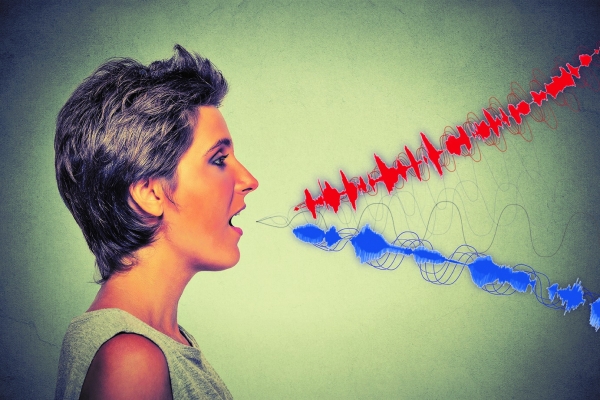How speaking fast is like running

Timing of speech is essential for communication. Everyone has their own habitual speaking rate, with some people speaking rather slowly and others speaking much faster. But we all vary our speaking style from situation to situation. For instance, we may slow down to give listeners extra time to understand an important part of the message. Or we may speed up to say more in the same period of time.
How do people control their speech rate? Existing theories about how we plan speech—from choosing a word to the actual movements of your tongue and lips—do not take variability in speech rate into account. However, Joe Rodd and his colleagues argue that speech rate is crucial for theories of speech planning: as we think of words to say during speaking, the system for preparing words to be pronounced must keep up with our speech rate.
‘Walk-speaking’ and ‘run-speaking’
Could speech be like locomotion, another system with a varying range of speed? People can walk faster, but to really speed up we need to start running. These gaits (walking vs running) are clearly qualitatively different. As Rodd explains: “maybe this analogy holds for speech too: to speak slowly we would adopt a ‘walk-speaking’ gait, to speak fast, we would switch to a ‘run-speaking’ gait.”
To investigate whether there are ‘gaits’ of speech, the researchers constructed a new model of speech production (EPONA), and examined how this model adapted to speaking at different rates. To test the model, the scientists collected data by asking speakers to pronounce strings of Dutch nouns at three different speaking rates (slow, medium and fast speech). Next, the relative duration of the syllables was simulated with the model, such that the model’s timing closely resembled that of the human speakers. Would speech have one gait, two gaits or even three gaits (rather like walking, trotting and galloping in horse locomotion)?
Sudden shifts between ‘gaits’
The computer simulation clearly showed ‘gaits’ of speech planning, which were qualitatively distinct from each other. Rather than smooth transitions between the different durations, the researchers observed sudden shifts, indicating boundaries between at least two ‘gaits’. Importantly, rather than having just one gait which can be sped up or slowed down linearly, speakers control their speech rate by shifting between gaits.
“This finding is very important for models of speech planning, which before now have ignored the rich variation in how words are spoken”, says Rodd. “Our next step is to test whether there are differences in how easy it is for speakers to change their speaking rate, depending on whether or not they have to switch gait to do so”.
Publication
Joe Rodd, Hans Rutger Bosker, Mirjam Ernestus, Phillip M. Alday, Antje S. Meyer & Louis ten Bosch. “Control of speaking rate is achieved by switching between qualitatively distinct cognitive ‘gaits’: Evidence from simulation.”
Psychological Review, doi 10.1037/rev0000172
Share this page